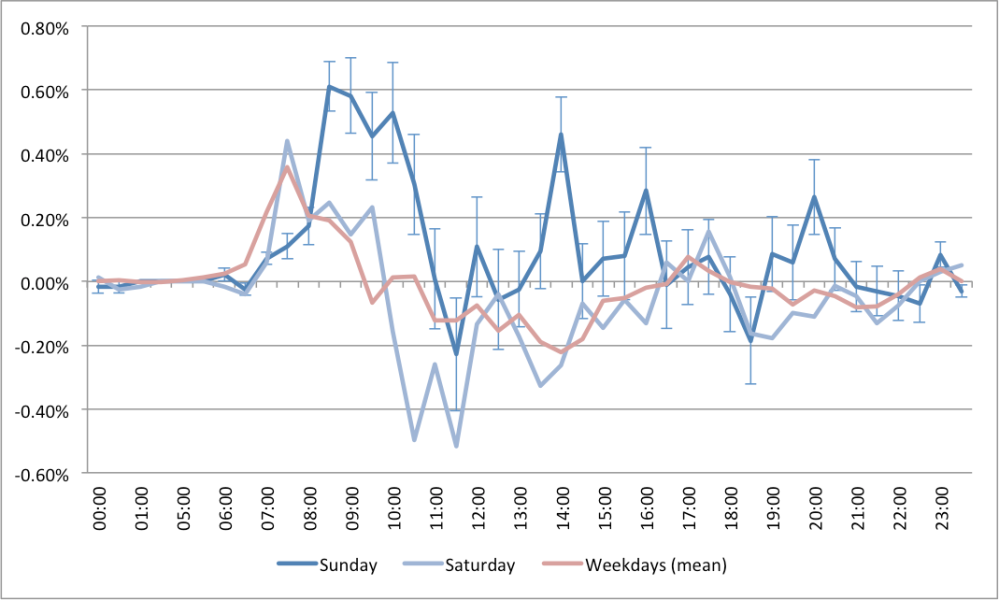It seems fairly obvious that the way people perform everyday practices in the home will structure, if not define, their temporal patterns of energy consumption. Energy strategists (and especially those in the electricity sector) have an increasing interest in these temporal patterns because they comprise the ‘demand side’ that the supply side has to balance, they constitute the (evening weekday) network demand peaks that DNOs have to design for and unfortunately for a low carbon future, they do not just happen when the sun is shining or the wind is blowing. But what data do we have on such patterns?
As a previous blog reported I have been working with the DEMAND Centre to do this using time-use survey data. Even if we include tumble drying, doing the domestic laundry may not be a significant energy consuming habit but considering the timing of laundry over the last 20-30 years can show how energy-using habits can change in ways that might have multiple impacts on the electricity sector.
This work culminated in a recently published paper which uses the available data to highlight the continuing gendered nature of domestic laundry in the Britain. Coupled with the increasing labour market participation of women, this may be necessitating a switch from weekday morning laundry to evening peak (problematic) and Sunday morning (unproblematic) laundry (see figure below).

Further analysis of laundry ‘types’ derived from the time-use data showed few clear relationships between standard socio-demographics characteristics and the details of laundry habits. Apparently similar people display substantially different performances of practices and may also display a repertoire of practices. There is therefore no such thing as a weekday evening launderer – rather the practice of weekday evening laundry may be more likely to feature in the repertoire of laundry practices of certain kinds of people, but that is a rather different conclusion.
Above all the analysis demonstrates that current patterns of demand are not ‘given’ but are simply a slice through a constantly evolving system – even for something as mundane as laundry.
To find out more see: